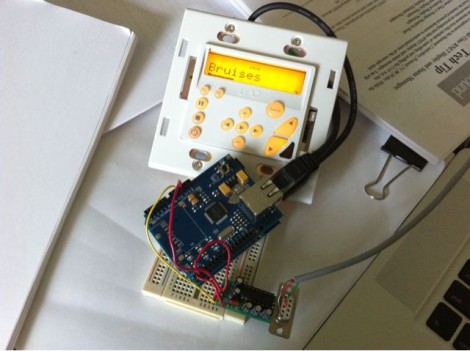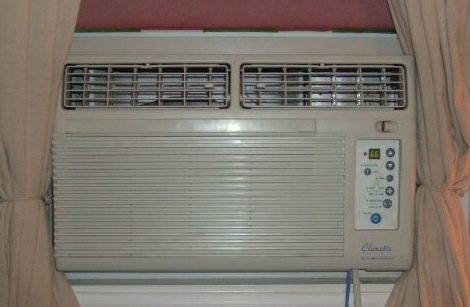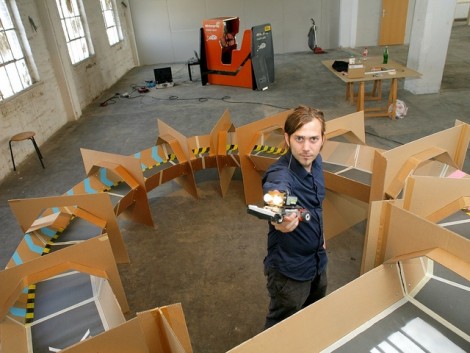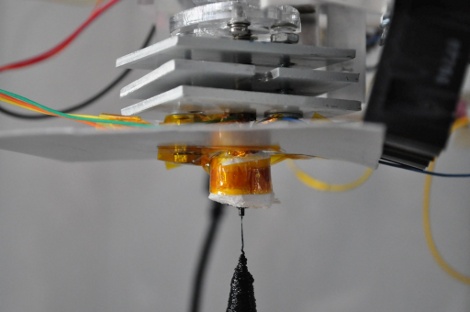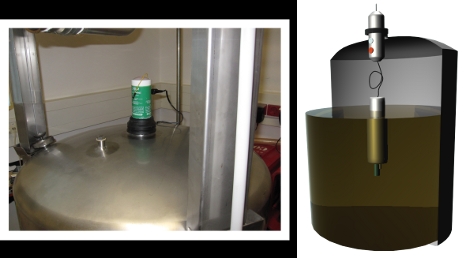
As part of his Master’s dissertation [Salvador Faria] built a sensor suite for wine monitoring. He needed to develop a method of tracking data inside the wine cask during the vinification process. What he came up with eclipses the wine cellar temperature monitors we’ve seen before.
He picked up pH, temperature, carbon dioxide, alcohol, and relative humidity sensors from familiar vendors like Seeed, Parallax, and SparkFun. His original idea was to develop a floating probe that housed the entire package but he had quite a bit of trouble getting everything inside and maintaining buoyancy. The solution was a two-part probe; the stationary portion seen mounted on top of the cask houses the microcontroller, RF 433 MHz transmitter, and the gas sensors. Tethered to that is a floating probe that measures pH and temperature. Data is sent over radio frequency to an HTTP POST server every minute.

